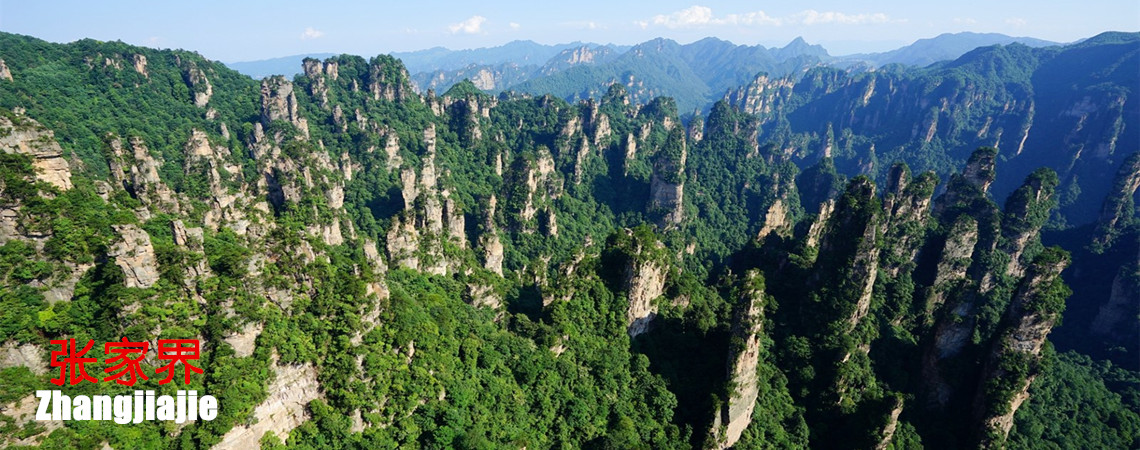Skype: neodalle-travel
Tel: +86 135 7447 2266
E-mail: sales@zhangjiajieholiday.com

With a population of approximately 8 million people, Tujia is an ethnic minority found in Hunan, Hubei, Sichuan, and Guizhou provinces. The Tujia have a long history, dating back 2,000 years, when their ancestors first immigrated to the western parts of Hunan and Hubei. They live mainly on agriculture and fish. Industrial crops, such as tung oil and tea are the main economic drivers in the area. Tourism is also popular, driven by scenic spots such as Zhangjiajie.
Tujia Arts and Crafts
Tujia Brocade
Tujia Brocade also named Xilankapu was used in imperial palace in Qin and Han Dynasties. It is famous for its exquisite skill, live type, intensive country and traditional features. In Tujia language,“ Xilan” means“bedcover” and “Kapu” means“flower”. So, Xilankapu is bedcover brocaded with flower. With colorful type, symmetrical thread and durable, it is precious art merged practice and appreciation.
Tujia Nuo Opera
Tujia Nuo Opera originated from sacrifice ceremony of Nuo God. In the ceremony, everyone make vow to Nuo God and performance Nuo Opera. Tujia Nuo Opera, Tima Songs, Maogusi Dance and Hand Wave Dance formed the old and special Nuo Culture. It is valuable for Tujia history and art.
Hand-wave Dance
With intense sacrifice color, the Hand-waving Dance is the most popular ancient dance in Tujia people. In the past, the Hand-waving Dance was a martial dance and used in fighting with enemy. The Hand-waving Dance expresses origin, immigration and historic events of Tujia groups. When the Hand-waving Dance is getting on, Tujia people dances accompanied at drums and gangs. It is grand that hundreds or thousands people perform the dance.
Tujia Tima Songs
In Tujia language, Tima means Old Tusi or the pontiff. Tusi mastered annual sacrifice ceremony of Tujia people. In the ceremony, Tusi sing worship songs named Tianma Songs. Tianma songs describe origin, reproduction and wars of Tujia people. With knowledge of music, literature, language and folk customs, it is treasure of Tujia culture.
Purple Sand Pottery
Purple Sand Pottery is a traditional art made from purple sand earth in high temperature. In DaYong Purple Sand Pottery Factory, there are dozens series product, such as pot, cup, bottle and oven. With flower carving, poem and picture on pottery, the pottery is popular souvenir.
Cross-cousin marriage
Cross-cousin marriage named Biandan Marriage or Duikai Marriage means cousins marry. This old marriage left by local groups was populous in both Han people and minority in the past. It disappeared after liberation.
Exchange Marriage
Exchange Marriage means two families exchange sisters or daughters as wives or law-daughters. It has deal form and package form. The reason of this marriage is save money.
Transform Marriage
Transform Marriage means two sisters married with two brothers. This unusual marriage shows the fact that people regards wife as personal propriety.
Bridegroom become son
The bridegroom becomes son after marriage.
The Cry Songs in The Wedding
Tujia bride don't go to working before several days of wedding. The bride and here nine good girl friends seat around the table and start to sing the Cry Songs until wedding day. The mother cries with here daughter. The aunts cry with niece. The sisters cry with the bride. The sister in law cries with the bride. The girls all abuse the matchmakers. The contents of the Cry Songs are rich. Some songs express that the daughter appreciate nurture of mother. Other songs show the friendship between sisters. Another songs express distress of departing from here mother. All people on the spot are moved by the Cry Songs. The Cry Songs is a difficult sing art and the bride must learn it from the teachers.
Stickup Landscape of Tujia
It is a Tujia nationality handcraft special. Various figures, landscape, animals, plants are vividly made out of raw materials such like root, branch, leaves, bark, sand, stone, grass, rag etc.
Tortoise Textile Stone Handcraft
The scientific name of the stone is corallite, which is found in Tianzi Mountain area. The textile of the stone is mostly polygon shaped like that of tortoise. Articles made out of the stone gain favors from the tourists.
Root carving, root and cobble sculpt of Tujia nationality
Mountains, limestone caves, rivers and streams provide rich raw material resources for root carving, root and cobble sculpt. Zhangjiajie is therefore known for handcraft and art pieces made out of these items.
Tujia Silk Wovern
Tujia nationality has the tradition of using silk woven for different occasions. The silk woven of Tujia nationality has its unique style and techniques. It was too an article of tribute in ancient time. Tujia silk woven is indeed an ideal souvenir.
Lobster Flower Tea
Lobster Flower Tea is also local special of Wulingyuan Scenic Area. It is mixture of highland twigs of tea tree and lobster flower. The tea water is yellow, clear and sweet smelling. The tea water has sugary taste and is rich of amino acid. The appearance of the tea is like lobster and it is so named. The production period of the tea is during the raining season of spring. The tea has seven processing steps which demand special techniques.
 Ask Questions ?
Ask Questions ?